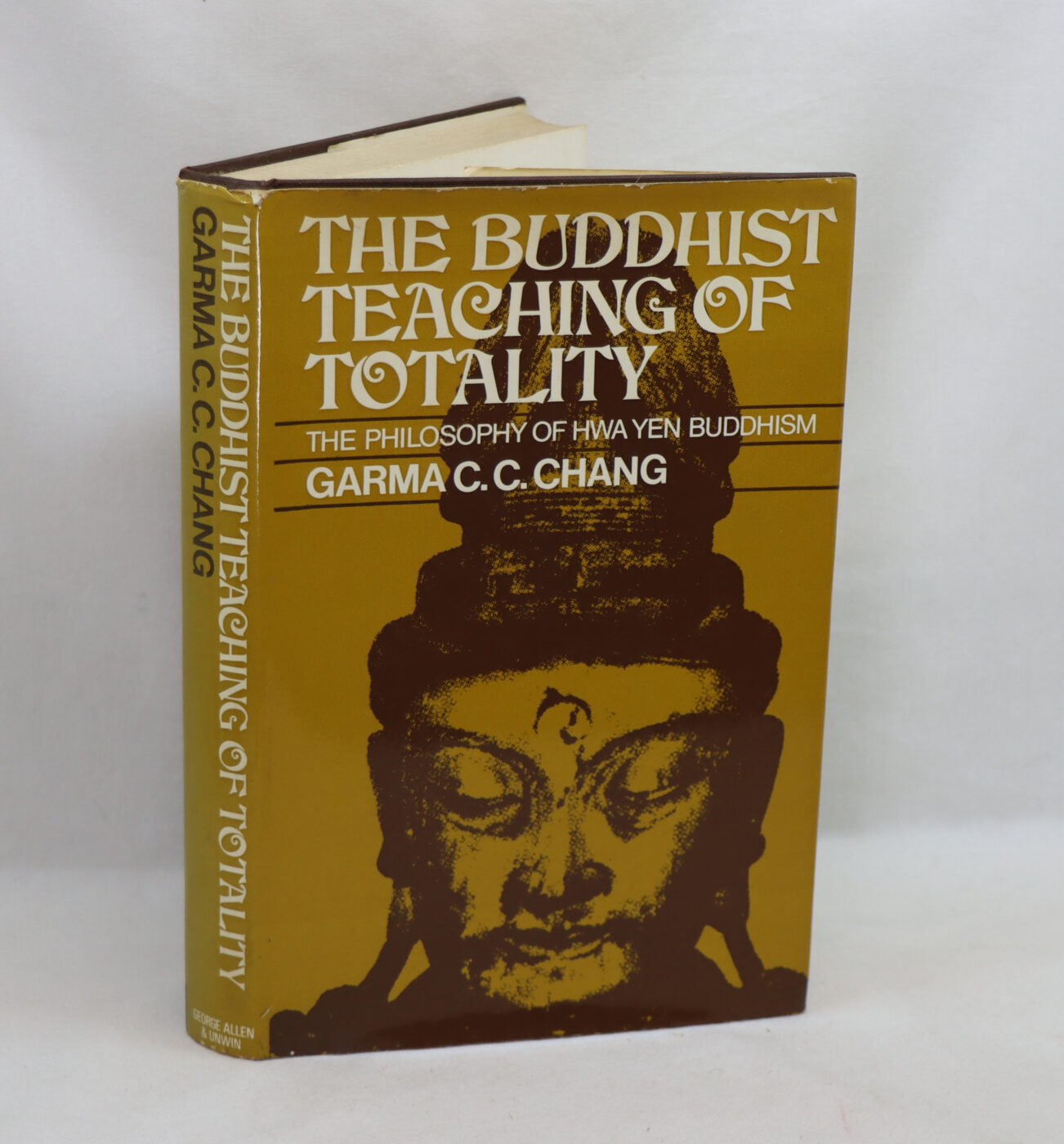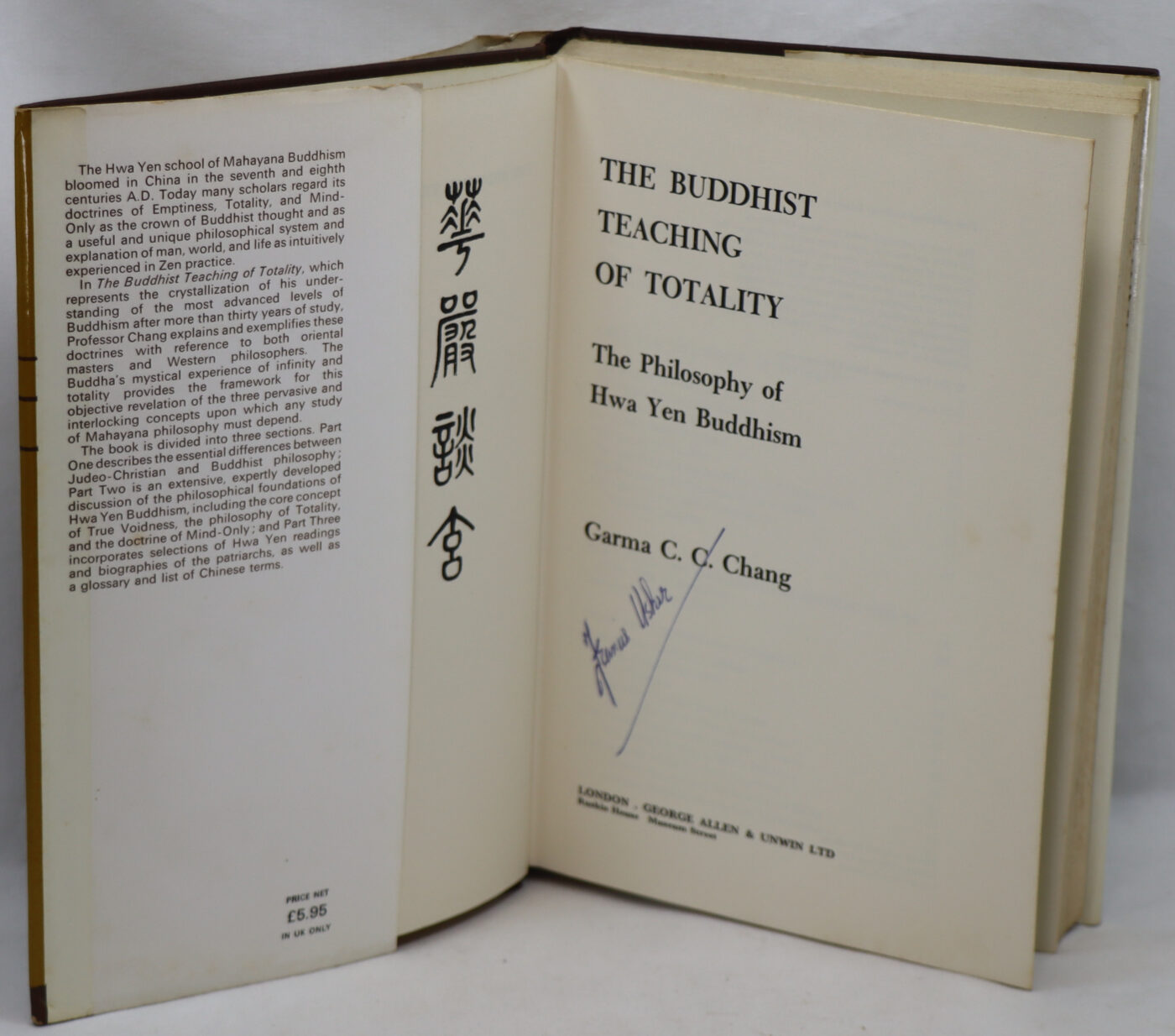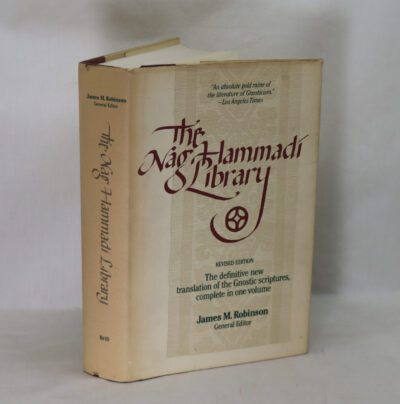The Buddhist Teaching of Totality.
By Garma C C Chang
ISBN: 9781135029579
Printed: 1972
Publisher: George Allen & Unwin. London
| Dimensions | 17 × 24 × 3 cm |
|---|---|
| Language |
Language: English
Size (cminches): 17 x 24 x 3
Condition: Good (See explanation of ratings)
Item information
Description
In the original dust jacket. Brown cloth binding with gilt title on the spine.
We provide an in-depth photographic presentation of this item to stimulate your feeling and touch. More traditional book descriptions are immediately available.
- Note: This book carries a £5.00 discount to those that subscribe to the F.B.A. mailing list
A rare quality book, please view the photographs. “That The Buddhist Teaching of Totality is a unique and long-needed contribution to Buddhological literature in English cannot be denied. Not only is it one of the very few introductions to a school of Chinese Buddhism other than Ch’an, it is one of the few attempts in any language to present systematically the essential features of the Flower (Hwa Yen) Garland School, perhaps the most philosophical sophisticated example of Buddhist syncretism ever to be produced.”
The Hwa Yen school of Mahāyāna Buddhism bloomed in China in the 7th and 8th centuries A.D. Today many scholars regard its doctrines of Emptiness, Totality, and Mind-Only as the crown of Buddhist thought and as a useful and unique philosophical system and explanation of man, world, and life as intuitively experienced in Zen practice.
For the first time in any Western language Garma Chang explains and exemplifies these doctrines with references to both oriental masters and Western philosophers. The Buddha’s mystical experience of infinity and totality provides the framework for this objective revelation of the three pervasive and interlocking concepts upon which any study of Mahāyāna philosophy must depend.
Following an introductory section describing the essential differences between Judeo-Christian and Buddhist philosophy, Professor Chang provides an extensive, expertly developed section on the philosophical foundations of Hwa Yen Buddhism dealing with the core concept of True Voidness, the philosophy of Totality, and the doctrine of Mind-Only. A concluding section includes selections of Hwa Yen readings and biographies of the patriarchs, as well as a glossary and list of Chinese terms.
Siddhartha Gautama, most commonly referred to as the Buddha (lit. ’the awakened one’),was a wandering ascetic and religious teacher who lived in South Asia during the 6th or 5th century BCE and founded Buddhism. According to Buddhist legends, he was born in Lumbini, in what is now Nepal, to royal parents of the Shakya clan, but renounced his home life to live as a wandering ascetic. After leading a life of mendicancy, asceticism, and meditation, he attained nirvana at Bodh Gayā in what is now India. The Buddha then wandered through the lower Indo-Gangetic Plain, teaching and building a monastic order. Buddhist tradition holds that he died in Kushinagar and reached parinirvana (“final release from conditioned existence”).
According to Buddhist tradition, the Buddha taught a Middle Way between sensual indulgence and severe asceticism,leading to freedom from ignorance, craving, rebirth, and suffering. His core teachings are summarized in the Four Noble Truths and the Noble Eightfold Path, a training of the mind that includes ethical training and kindness toward others, and meditative practices such as sense restraint, mindfulness, dhyana (meditation proper). Another key element of his teachings are the concepts of the five skandhas and dependent origination, describing how all dharmas (both mental states and concrete ‘things’) come into being, and cease to be, depending on other dharmas, lacking an existence on their own svabhava).
While in the Nikayas, he frequently refers to himself as the Tathāgata; the earliest attestation of the title Buddha is from the 3rd century BCE, meaning ‘Awakened One’ or ‘Enlightened One’. His teachings were compiled by the Buddhist community in the Vinaya, his codes for monastic practice, and the Sutta Piṭaka, a compilation of teachings based on his discourses. These were passed down in Middle Indo-Aryan dialects through an oral tradition. Later generations composed additional texts, such as systematic treatises known as Abhidharma, biographies of the Buddha, collections of stories about his past lives known as Jataka tales, and additional discourses, i.e., the Mahāyāna sūtras.
Buddhism evolved into a variety of traditions and practices, represented by Theravāda, Mahāyāna and Vajrayāna, and spread beyond the Indian subcontinent. While Buddhism declined in India, and mostly disappeared after the 8th century CE due to a lack of popular and economic support, Buddhism has grown more prominent in Southeast and East Asia.
Want to know more about this item?

Related products
Share this Page with a friend











